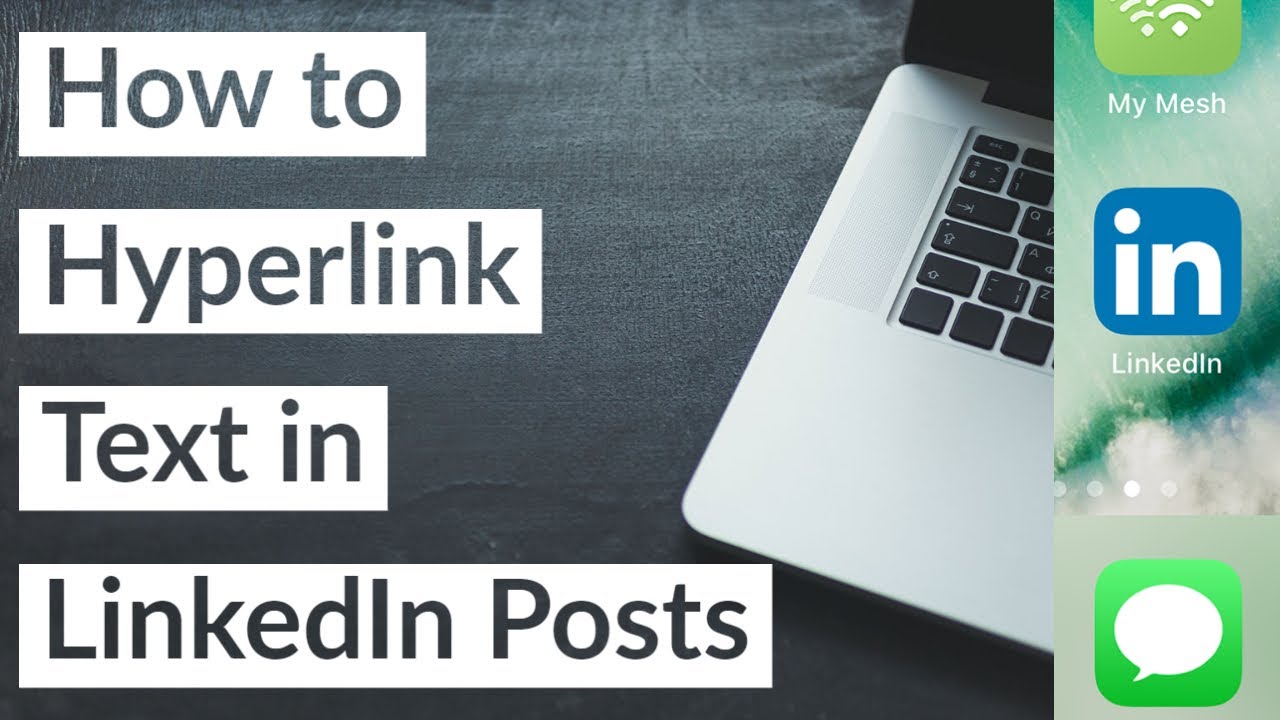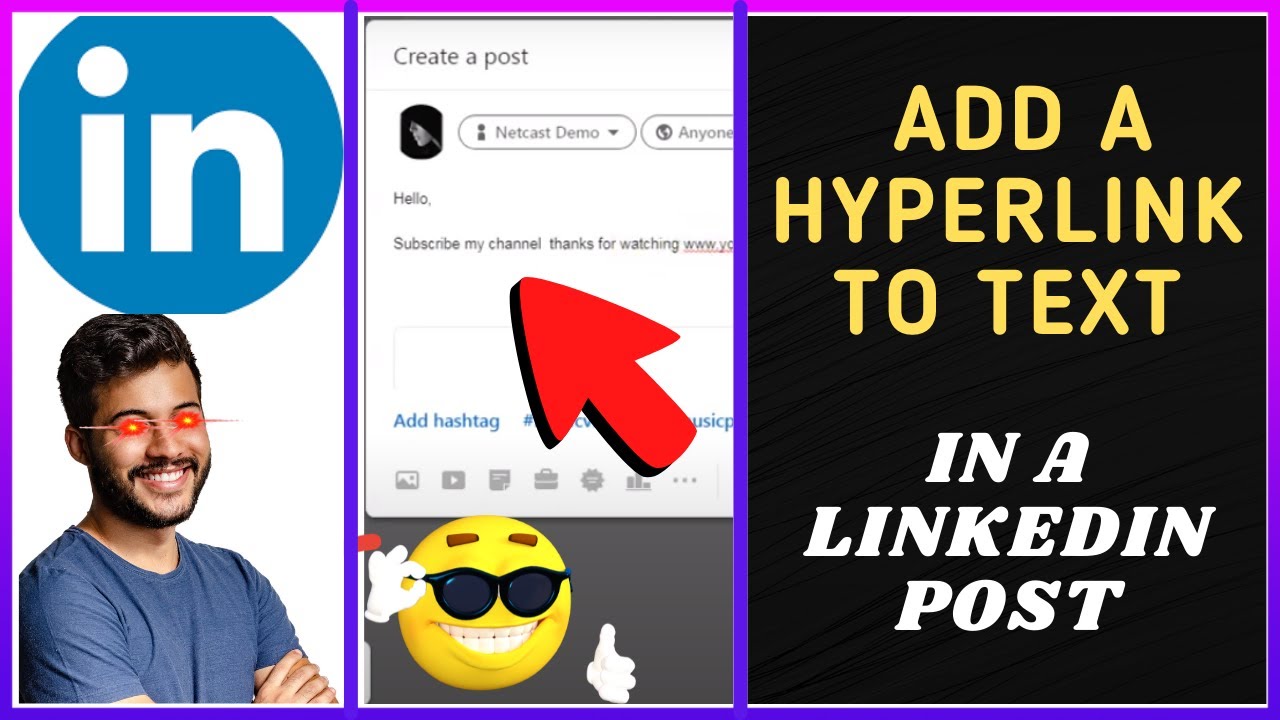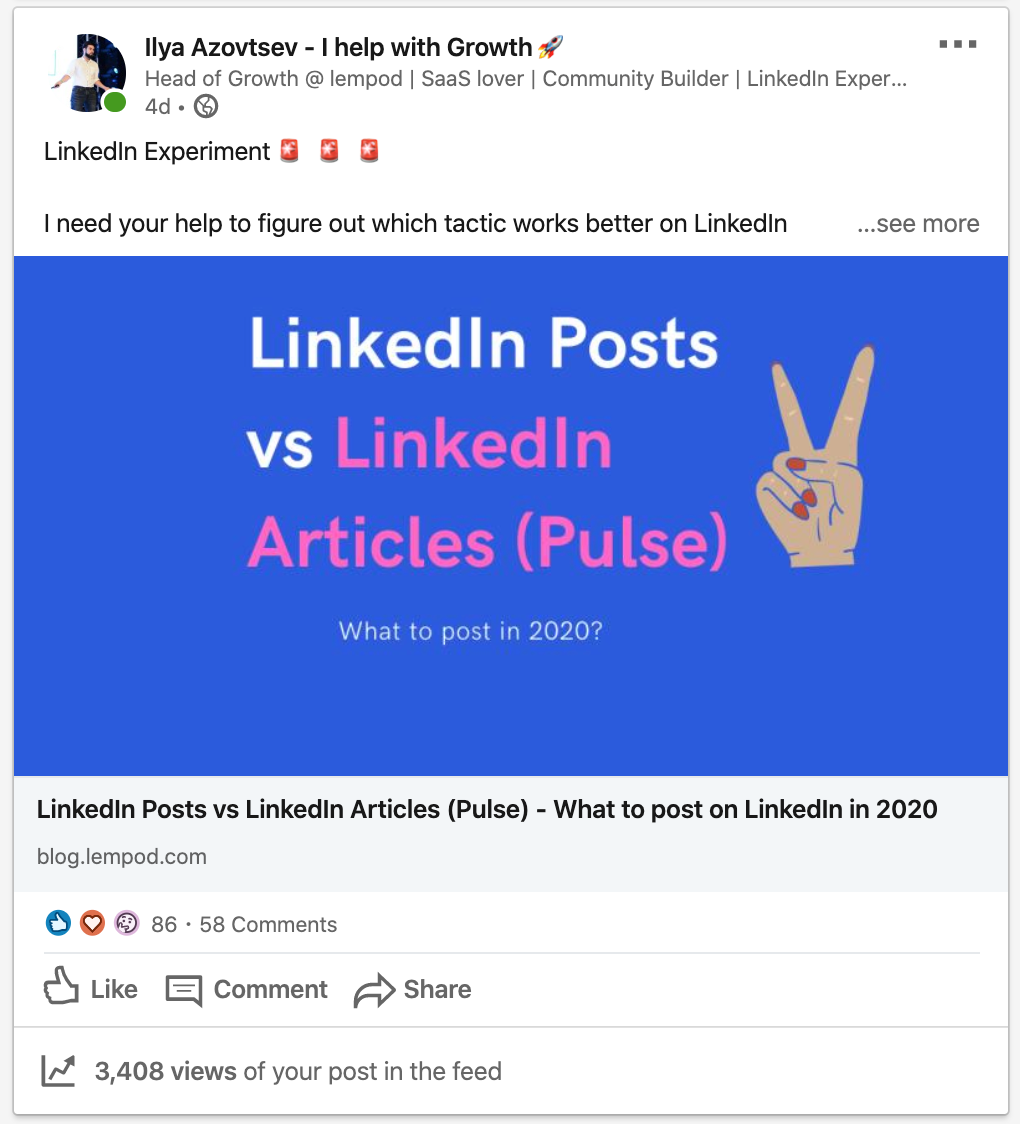Have you ever found yourself scrolling through LinkedIn, intrigued by a post, only to spot a hyperlink that beckons you to click? Hyperlinks are essential in making your content interconnected and informative. In this digital landscape, mastering the art of adding hyperlinks to your LinkedIn posts can enhance your engagement and expand your professional network. Let’s dive into how to effectively use hyperlinks and why they matter!
Why Use Hyperlinks in Your LinkedIn Posts

Incorporating hyperlinks into your LinkedIn posts is not just a nifty trick; it's a game-changer for your professional outreach. Here’s why you’d want to consider using hyperlinks:
- Enhance Content Value: Links provide your audience with additional information, resources, or references that enrich your post. If you've made an insightful remark, a link can direct them to your blog or an article that delves deeper into the subject.
- Drive Traffic: If you have a personal website, portfolio, or blog, embedding hyperlinks can direct your LinkedIn followers to your other platforms. This can help you generate traffic and lead potential employers or clients back to your professional work.
- Engagement Booster: Posts with links often see higher engagement rates. By captivating your audience with relevant links, you're encouraging them to interact by liking, commenting, or sharing your content.
- Credibility and Authority: By linking to reputable sources, you position yourself as a well-informed professional. This enhances your credibility within your industry and shows that you're committed to sharing valuable insights.
In summary, hyperlinks can significantly enhance your LinkedIn presence, offering value to your audience while building your personal brand. So, don’t just post; link with purpose!
3. Step-by-Step Guide to Adding Hyperlinks

Adding hyperlinks to your LinkedIn posts is a straightforward process that can enhance the value of your content. Let’s break it down step-by-step.
- Log in to LinkedIn: Make sure you’re signed into your LinkedIn account. You can do this via browser or the LinkedIn mobile app.
- Create a New Post: Click on the 'Start a post' option at the top of your feed. This will open a new window where you can write your post.
- Type Your Content: Write your message, share your thoughts or insights. This can be an article summary, a project update, or a question posed to your network.
- Add the Hyperlink: Once you're ready to add a hyperlink:
- Simply paste the URL directly into the post where you want it to appear. LinkedIn will automatically create a preview link which makes the post visually appealing.
- You can manually hyperlink text by writing out a piece of text, and then adding the URL afterward, especially if you’re using the LinkedIn publishing platform.
- Preview Your Post: Before hitting ‘Post’, take a moment to check how your hyperlink appears and how it looks with the rest of your content.
- Post It! Once you're satisfied, click on ‘Post’ to share it with your network. Your hyperlink will now be active and clickable!
4. Best Practices for Including Links in Your Posts

Including links in your LinkedIn posts can drive traffic to your content, enhance engagement, and establish your credibility. But how do you do it effectively? Here are some best practices to consider:
- Keep It Relevant: Ensure that the link you include is relevant to the content of your post. This builds trust with your audience and keeps them engaged.
- Use Shortened URLs: If you're sharing a long URL, consider using a URL shortener such as Bitly. This makes your post look cleaner and more professional.
- Engage with a Call-to-Action (CTA): Encourage your readers to click the link. Phrases like "Check out this article," or "Learn more here," can motivate readers to take action.
- Limit Links: Try not to overwhelm your audience with too many links. One well-placed link per post is often more effective.
- Be Mindful of Link Previews: Always check how LinkedIn displays the link preview. A strong visual can enhance your post's attractiveness significantly.
- Monitor Engagement: After posting, keep an eye on how your audience interacts with the link. This can provide valuable insights for future posts.
By implementing these practices, you can optimize your LinkedIn posts and ensure that your hyperlinks serve their intended purpose effectively.
Common Mistakes to Avoid with LinkedIn Hyperlinks
Adding hyperlinks to your LinkedIn posts can significantly boost engagement, but there are some common pitfalls you should steer clear of. Let's dive into the top mistakes:
- Using Too Many Links: While it might be tempting to link to multiple sources, keep it simple. A cluttered post with multiple hyperlinks can confuse readers and dilute your message. Stick to one or two relevant links to keep the focus clear.
- Ineffective Link Placement: Always think about where your links appear. If they're buried at the bottom of your post, many readers may not see them. Ensure your hyperlink is placed strategically, ideally towards the beginning or middle of your post to grab attention.
- Unclear Anchor Text: Instead of using generic phrases like “click here,” opt for descriptive anchor text that tells readers what they can expect. For example, “Read my latest article on digital marketing strategies” is much more engaging.
- Ignoring Mobile Optimization: A large portion of LinkedIn users access the platform via mobile devices. Always preview your links on both desktop and mobile to ensure they look good and function properly.
- Neglecting to Test Links: Before you hit post, double-check your hyperlinks to make sure they work correctly. There's nothing worse than sharing a broken link - it can leave your audience frustrated and unengaged.
By avoiding these common mistakes, you can ensure your LinkedIn hyperlinks are effective and drive the engagement you’re seeking.
Analyzing the Effectiveness of Your Links
Once you've shared a LinkedIn post with hyperlinks, it’s crucial to assess how well those links are performing. Analyzing effectiveness helps refine your future posts for better engagement. Here’s how you can do it:
- Use LinkedIn Analytics: LinkedIn provides analytics for your posts. Check the number of clicks your links are getting, as well as likes, comments, and shares. It’s a great way to gauge interest.
- Track Click-Through Rates (CTR): Calculate the CTR by dividing the number of link clicks by the total number of views. A high CTR indicates that your link is appealing to your audience.
- Monitor Engagement: Pay close attention to how users engage with your posts. Are they commenting on the linked content? Are they starting discussions? This qualitative data is just as important as quantitative metrics.
- Testing Different Approaches: Try varying your anchor text, link placements, or even the type of content you’re linking to. Testing different approaches will allow you to find out what resonates best with your audience.
- Gather Feedback: Don't hesitate to ask your network for feedback on your posts. Direct questions about whether the links are useful can provide valuable insights.
By regularly analyzing the effectiveness of your hyperlinks, you'll not only improve user engagement over time but also build a stronger connection with your audience on LinkedIn.
How to Add a Hyperlink in LinkedIn Post: Best Practices for Links in Posts
LinkedIn is an essential platform for professionals and businesses to connect and share valuable content. Adding hyperlinks to your posts can significantly improve engagement and drive traffic to your website or blog. Here are some best practices to effectively incorporate hyperlinks in your LinkedIn posts:
- Keep It Relevant: Ensure the hyperlinks you include are directly related to the content of your post. This enhances credibility and encourages your audience to click through.
- Make It Clear: Use descriptive anchor text. Instead of saying "click here," say "read more about our latest research on [topic]." This gives readers a better idea of what to expect.
- Limit the Number of Links: While links can boost engagement, overloading your posts with them can overwhelm readers. Stick to 1-2 high-quality links per post.
- Test Your Links: Always double-check your hyperlinks to ensure they lead to the correct destination and that the pages are active.
- Add Value: Provide context around the link. Share why the linked content is valuable and how it benefits the readers.
- Engagement: Encourage interaction by asking questions related to the content of your link, inviting readers to share their thoughts.
Table of Best Practices for Hyperlinks:
| Practice | Description |
|---|---|
| Relevance | Links should be directly related to the post's subject. |
| Clear Text | Use descriptive text that communicates what the link offers. |
| Limit Links | Use no more than 2 links to avoid overwhelming readers. |
| Active Links | Regularly check links to ensure they lead to valid pages. |
| Value Addition | Explain the importance of the linked content. |
In conclusion, adding hyperlinks in your LinkedIn posts is a strategic way to enhance engagement and provide more value to your audience. By following these best practices, you can ensure that your posts are not only informative but also actionable, driving both clicks and conversations around your content. Remember that clarity, relevance, and interaction are key to maximizing the effectiveness of hyperlinks in your LinkedIn strategy.
 admin
admin








